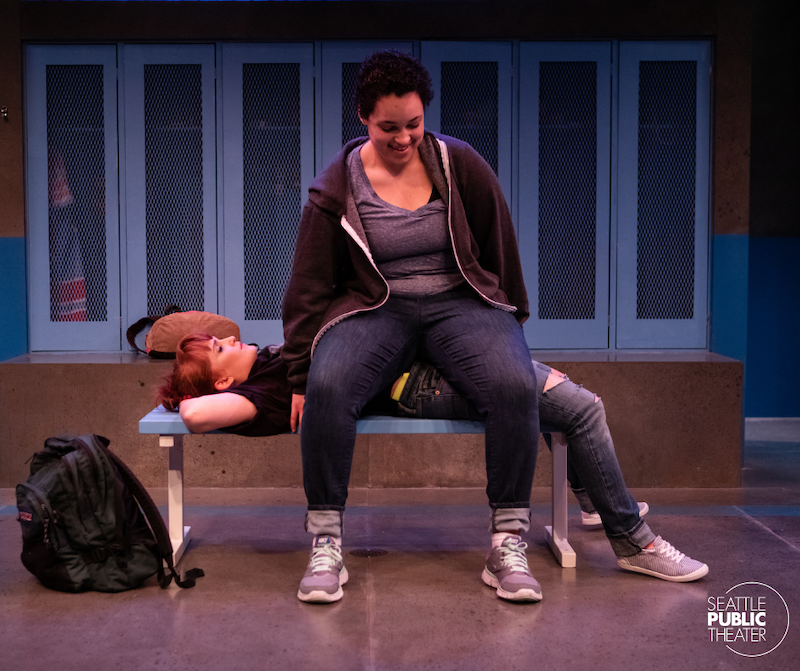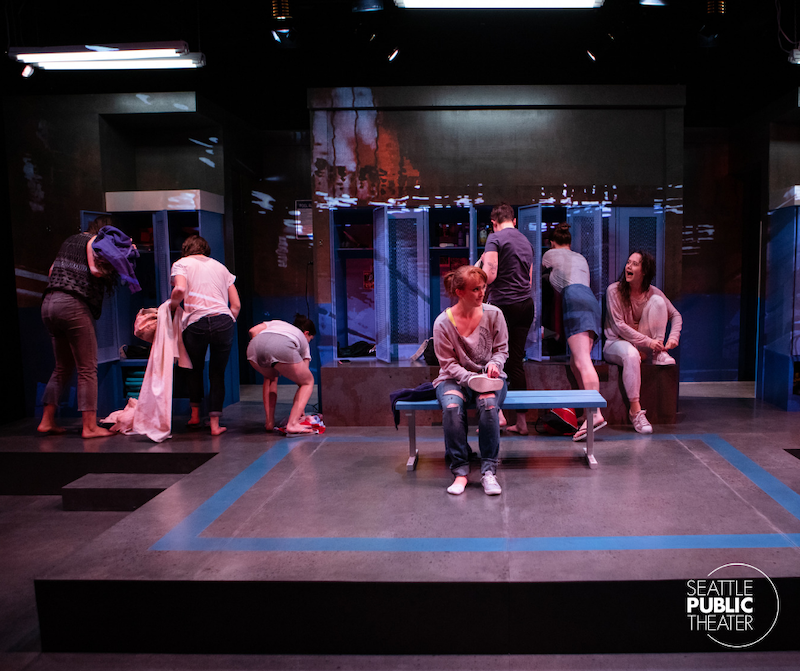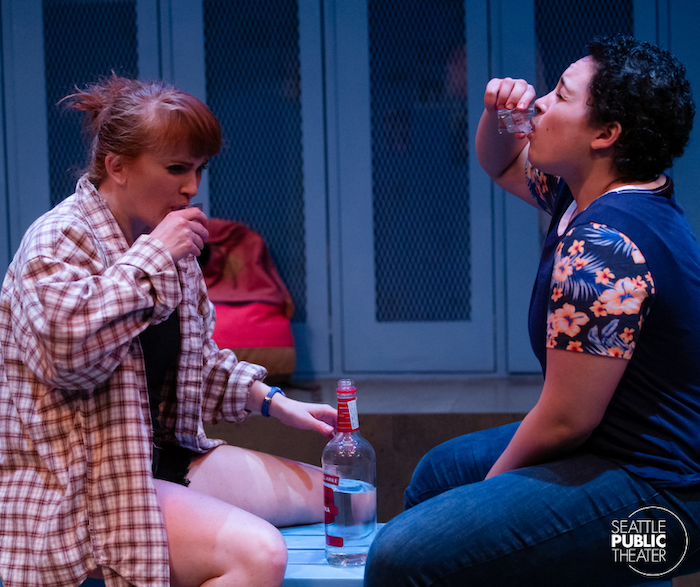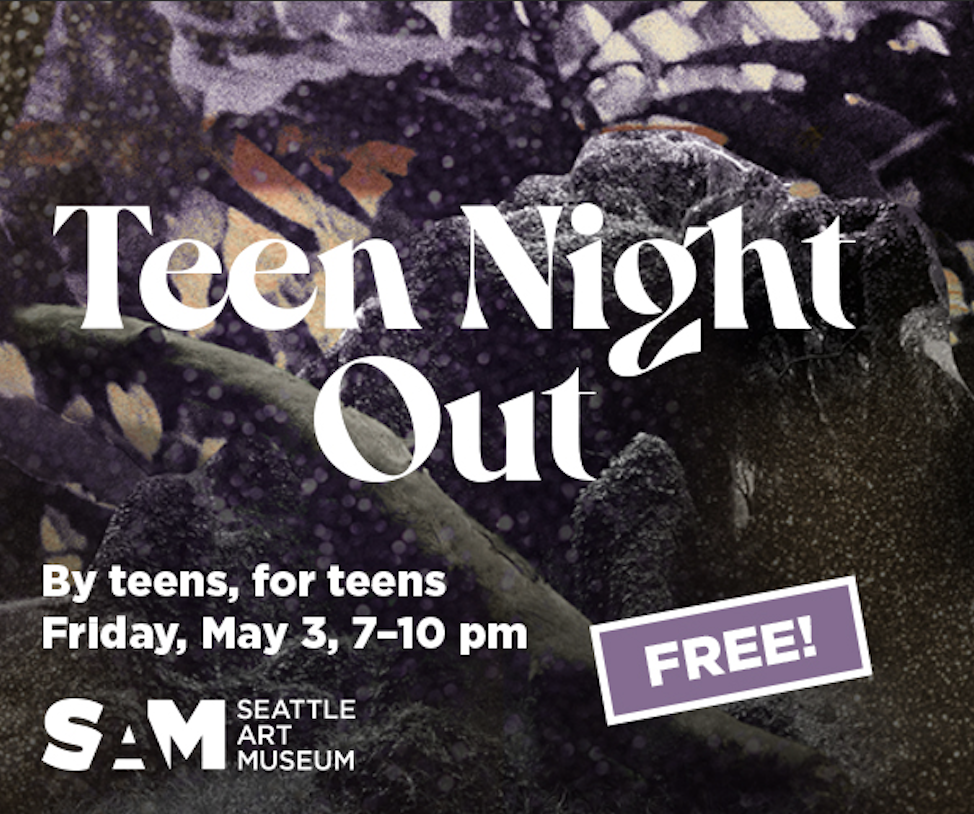Dry Land: A New Age of Theater Production
Review of Dry Land at Seattle Public Theater.
Written by TeenTix Newsroom Writer Lucia McLaren and edited by Teen Editor Lily Williamson!

Dry Land, a play written by Ruby Rae Spiegel and directed by Anita Montgomery, is based around abortion: a controversial, yet largely ignored topic. Dry Land tells the story of Amy (played by Libby Barnard) and Ester (Madilyn Cooper), two high schoolers on the same swim team. It’s soon made clear to the audience that Amy is pregnant, and she’s struggling, with Ester’s help, to find a way to end her pregnancy without anyone finding out. The two of them go to desperate measures, all the while trying to keep their friendship. Taking on a controversial topic like abortion is a bold choice by Spiegel, though it’s clear that those working on the show know that this story is one that needs to be told.
When I first arrived in the theater, I was struck immediately by the composition of the audience. I was one of only a few teenagers watching the play, which seemed strange to me because of how the play focused on the struggles of young people when obtaining abortions. Though this certainly doesn’t mean that this topic is not important to adults, it was interesting for me to consider whether this theater experience was the first time that some of the audience members had really been exposed to how abortion relates to teens in such a direct way.

Another thing that struck me when I first walked in was the size of the stage—it was much smaller than I was expecting. So, I was naturally curious how the actors were going to be able to pull off scene changes in such a small setting. My question was answered soon enough; with one small exception, there were no scene changes in the actual play—the swimming pool locker room was the setting in almost every scene. Though I must admit that this singular setting did seem a little repetitive by the end, most of the time there was enough variety in how the different scenes played out that I wasn’t wishing for a change of scenery. Another prominent artistic decision in Dry Land was the lighting in between scenes, with how it resembled waves in the pool-based setting.
The general public has little reliable knowledge about abortion. So, Dry Land, although it is relatively small-scale, holds a lot of influence as to how abortion will be seen in the future by its audience. Because of this, when evaluating this play, my main question was ‘did they do the topic justice?’ Abortion and how it is perceived affects millions and millions of people around the globe, and this play has the rare and unique opportunity to influence how many see it.

After seeing the play, it’s clear to me that those working on the play fulfilled their responsibility that they took on by doing the topic that they did. The actors were very successful in how they portrayed their characters in the scenes—how real their conversations are is frankly, painful. The scenes themselves were realistic to the point of being graphic—one included a drawn-out portrayal of a pharmaceutical abortion, which was very shocking to most in the audience. However, the decision to include this and other realistic portions was not a bad one. By making the play so real, they instilled into the audience the reality of the lives of teenagers who have to go to desperate measures because of how our society sees abortion.
Dry Land was definitely a drastically different kind of theater production. But this was for the better. It tells the story of a desperate teenager and her friend attempting to end a pregnancy without anyone finding out, and does the topic justice in how painfully real it is for the viewing audience. The producers of this show gave themselves a lot of responsibility by taking on abortion, something that’s vehemently debated about in the modern world. There’s a lack of awareness surrounding it, and so this play was very moving to an audience that may not have had an experience like this otherwise. It’s a hopeful outlook on the future, and I, as a young woman, hope to someday see stories like this being told in larger-scale productions.
Lead photo credit: John Ulman
The Teen Editorial Staff is made up of 5 teens who curate the review portion of the TeenTix blog and manage the TeenTix Newsroom. More information about the Teen Editorial Staff can be found HERE.
The TeenTix Press Corps promotes critical thinking, communication, and information literacy through criticism and journalism practice for teens. For more information about the Press Corps program see HERE.


